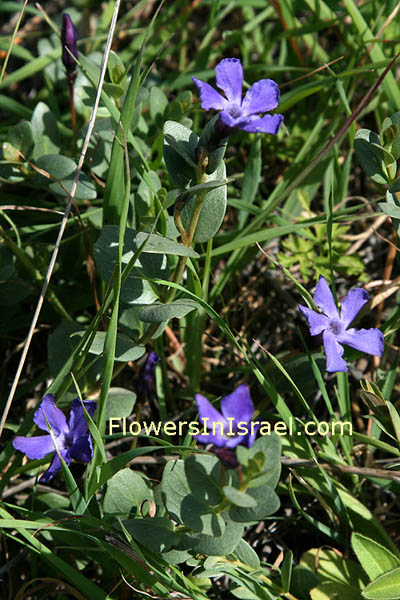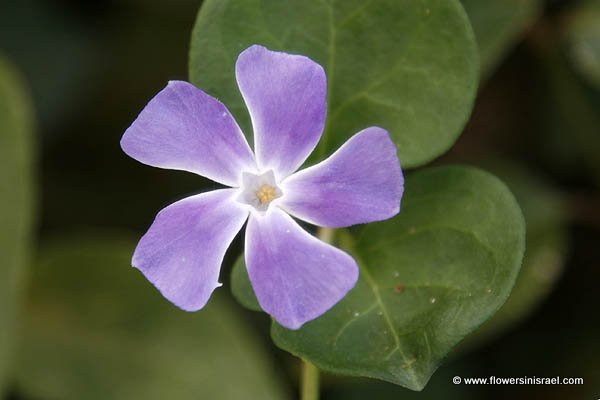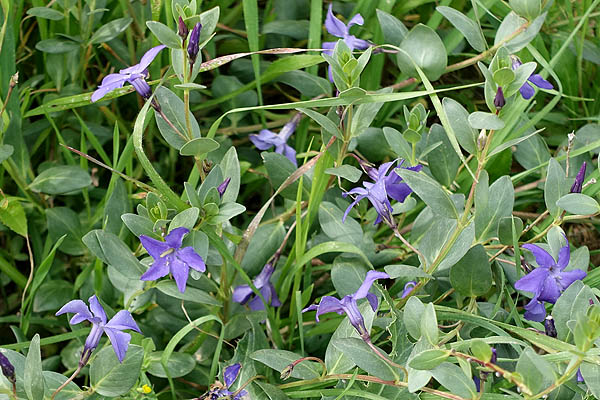וינקה עשבונית
| Scientific name: | Vinca herbacea Waldst. & Kit | |
| Scientific name: | Vinca pumila E.D.Clarke, Vinca mixta Velen. | |
| Common name: | Herbaceous Periwinkle | |
| Hebrew name: | וינקה עשבונית | |
| Family: | Apocynaceae, הרדופיים |

|
| Life form: | Hemicryptophyte | |
| Stems: | Up to 45 cm; trailing vine, spreading along the ground and rooting along the stems | |
| Leaves: | Opposite, lanceolate, entire margin | |
| Flowers: | Violet, dark blue | |
| Fruits / pods: | Follicle | |
| Flowering Period: | March, April, May | |
| Habitat: | Batha, Phrygana | |
| Distribution: | Mediterranean Woodlands and Shrublands, Semi-steppe shrublands, Shrub-steppes, Montane vegetation of Mt. Hermon | |
| Chorotype: | Euro-Siberian - Med - Irano-Turanian | |
| Summer shedding: | Ephemeral |

Derivation of the botanical name: Vinca, Latin vincire,'to bind', as the plant grows over everything in its area, or vincere, 'to overcome', after the plant's ability to help one overcome illness. herbacea, not woody. periwinkle,from Latin pervincire "to entwine, bind," from per- "thoroughly" + vincire "to bind, fetter." The Hebrew name: וינקה, vinca, transliteration from the scientific name Vinca.
Pliny the Elder(23 - 79 CE), Natural History, book XXI,68: "But the vicapervica is an evergreen, surrounded by leaves at the joints after the manner of the scarecrow cord, a plant for the fancy garden, but at times filling the gap when others fail. This plant is called chamaedaphne (Ground-laurel) by the Greeks". Lucius Apuleius (c. 125 – c. 180), a Latin prose writer: "I pray thee, vinca pervinca, thee that art to be had for thy many useful qualities, that thou come to me glad blossoming with thy mainfulness, that thou outfit me so that I be shielded and prosperous and undamaged by poisons and water." William Wordsworth (1770-1850), English poet: The periwinkle trailed its wreaths; And 'tis my faith that every flower Enjoys the air it breathes. 

Location: Pura Nature Reserve, שמורת פורה |